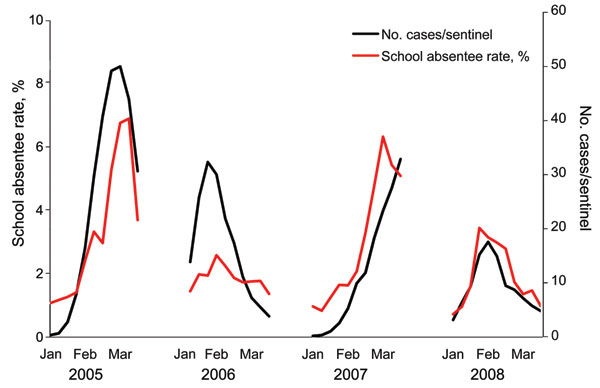Volume 15, Number 11—November 2009
Dispatch
Evidence-based Tool for Triggering School Closures during Influenza Outbreaks, Japan
Figure 1

Figure 1. Four-year surveillance of influenza-related absentee rates in 54 elementary schools in Joetsu City and national surveillance of influenza-like illness (ILI) reported by sentinel physicians in Japan. Data were collected from the second week of January (after the winter holiday) to the third week of March (before the spring holiday). The average of the daily absentee rates for 54 elementary schools during 4 influenza seasons (2005–2008) were 3.29%, 1.77%, 2.97%, and 1.92%, respectively.
Page created: December 09, 2010
Page updated: December 09, 2010
Page reviewed: December 09, 2010
The conclusions, findings, and opinions expressed by authors contributing to this journal do not necessarily reflect the official position of the U.S. Department of Health and Human Services, the Public Health Service, the Centers for Disease Control and Prevention, or the authors' affiliated institutions. Use of trade names is for identification only and does not imply endorsement by any of the groups named above.